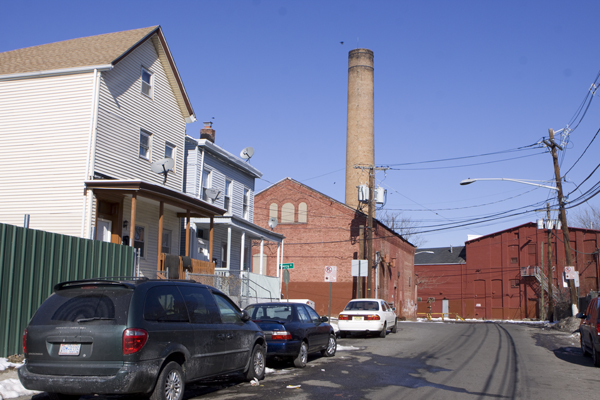What Ever Became of EPA Funded Newark Air Toxics Study?
Where is the EPA funded: Environmental Justice & Equity with Community-based Teamwork (EJECT) Study?
How Does Newark’s Air Quality and Community Health Compare to Paterson?

Paterson, NJ – Galaxie Chemical
The Bergen Record recently reported on a controversial $740,0000 EPA funded study of toxic air pollutants in Paterson NJ (see Paterson air study raises questions and City’s air may raise cancer risk).
Paterson residents were alarmed to learn that according to NJ DEP, Paterson has “toxic hot spots“, where industrial hazardous air pollutant emission sources are located near homes and schools.
DEP found that Paterson had characteristics of a disproportionately burdened environmental justice community based on race and income data and high rates of children’s respiratory health problems linked to pollution.
According to DEP, chemicals in the air in Paterson exceed DEP cancer risk levels by over 700 times:
Paterson has more than three times the state average for hospitalization rates due to asthma (Wallace, 2003). A study in Paterson (Freeman et al, 2002) found that 21% of third graders had been diagnosed with asthma or a related health problem. Paterson has the fifth highest hospitalization rate for asthma in NJ (NJDHSS, 2003). Twenty eight air toxics (Leikauf, 2002) have been associated with exacerbations of asthma and the 1996 [EPA] National Air Toxics Assessment identified fourteen air toxics which are causing elevated cancer and non-cancer risks (NJDEP, 2003) in Passaic Countys
Paterson Mayor Torres and community activists expressed concerns:
Paterson Mayor Joey Torres said he was “disturbed at the findings, …
“We’re willing to believe the results of this study are not controversial, but the DEP certainly has acted like they have something to hide,” said the Rev. David B. Wolf, rector of St. Paul’s Episcopal Church in Paterson and a leader of the community advocacy group Paterson Area Congregations Together. He said there very well might be a conflict of scientific opinion about the validity of combined cancer risk assessments, but why don’t they say that in the report? It feels like there’s a little bit of spin going on.”
But is anyone aware of the fact that EPA funded a similar urban community air toxics monitoring project in Newark? Other than an extremely obscure EPA website, I could find no information about this study, other than a summary (see below).
Whatever became of this study?
None of the links on the EPA Community-Based Air Toxics Project website were able to lead me to a copy of the study itself. According to EPA, the organization that performed the Study, Environmental Justice & Equity with Community-based Teamwork (EJECT), is active in Newark’s East Ward and are located in Atlantic Highlands. I could not find a phone number to contact them.
Maybe Mayor Booker and Congressman Payne can reach out to EPA and have EPA brief the Newark community and the press on the study’s Final Report. That would be quicker than forcing me to file OPRA and FOIA requests from DEP and EPA, respectively.
Here is the EPA website summary of the project – none of the EPA website links are working: